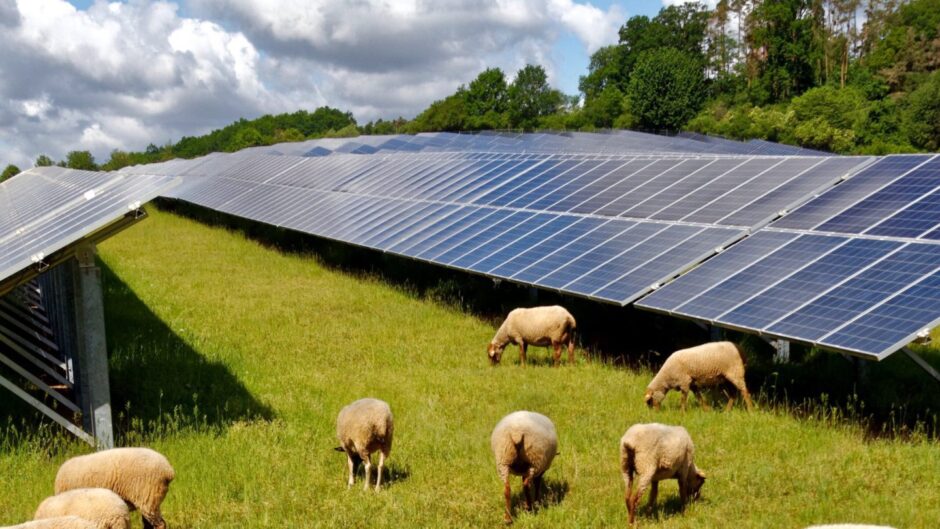
Without clean, green power, and a lot more of it, Britain and the world will find itself ever more at the mercy of a volatile, changing climate. The challenge is massive. The infrastructure need equally so.
In the UK, a quadrupling of offshore wind, a trebling of solar power and doubling of onshore wind capacity in half a decade is an exceptionally ambitious undertaking, necessary to reach Net Zero. Labour is placing it at the front and centre of its governing agenda. It is a task that will also require significant amounts of private sector capital and enthusiasm to make reality.
In my field of solar energy, the Energy Secretary approved three major ground-mounted solar projects in Mallard Pass, Sunnica and Gate Burton within a week of taking office. He has since approved a fourth at Cottam in Nottinghamshire. These projects will add 2GW to the UK’s existing 17GW of solar power capacity. As a signal of intention, the message could not be clearer.
‘Nimbys’ or not?
The Energy Secretary is absolutely right in his prescription for Britain’s clean energy needs. More clean, green, domestically produced power will improve the UK’s environment, economy and national security.
Solar energy is now one of the UK’s cheapest forms of energy, with some reports putting costs down 30%. Despite the name, solar does not require blazing sunshine to prove efficient and effective. Rooftop solar, which is often presented as an alternative to utility scale development and undoubtedly an important part of the equation, won’t come close to reaching the UK’s ambitious target. It is not a question of either or, the UK needs both.
As with any infrastructure, solar farms must be built somewhere. Communities adjacent to proposed sites will have understandable and legitimate concerns. Concerns that must be addressed and engaged with.
Dismissively labelling opponents as ‘nimbys’ will create a bigger, more powerful, longer-term backlash. The government’s proposed trebling of solar power capacity by 2030 will see vocal local opposition become a more visible feature of ambitious clean energy projects in the years to come. Ignoring this isn’t a solution.
This is not to say misinformation or misleading claims should be accepted as ‘the cost of doing business’. It is the job of developers to set out the facts and evidence of their proposed project and ensure that falsehoods are challenged. However, legitimate criticism must be engaged with and responded to through both formal and informal consultation.
Developers should not view this as a minimum legal requirement but an active part of their introduction to a local community. Robust, informed debate on individual local projects should be welcomed as the hallmark of a healthy democracy.
As part of this, developers should emphasise the positive local benefits of their project. Improving biodiversity, building new footpaths and creating additional space for herding farm animals are some. The site of sheep grazing around solar panels could be an increasingly common one across the UK.
Establishing community benefit funds to ensure financial benefit is directed to those nearby is another way of spreading the local benefits. In the case of our proposed solar farm at Botley West, we are forming a retail power company that will provide discounted, clean energy to surrounding communities. These should not be seen as ‘nice add-ons’ but instead the basic offering of an energy developer.
Minimising impact
At our own proposed development in Botley West in Oxfordshire, we have engaged in a targeted consultation process, which was longer than the legal requirement. We have also held numerous meetings with residents and community groups. This has resulted in material changes made to our initial plan, which I believe has made our proposal a better one.
Has it persuaded all local opponents? No. But it does demonstrate that engaging local communities is not simply a box-ticking exercise. It has also allowed us, where possible, to make improvements to the project, adjusting boundaries, re-routing cables and minimising impact wherever we can.
Evidence shows that clean energy projects enjoy strong local support compared to other infrastructure. Public First research from October last year saw 66% of Oxfordshire residents say they would support a new solar farm within 3 miles of where they live, with only 15% opposed.
This trend will strengthen further if local communities feel they have been heard, their concerns have been acted upon and they have been part of the process. Developers will never convince everyone, but they should at least try and make their case to everyone and listen closely to the feelings of the community.
Much of the current national debate around energy infrastructure is characterised as ‘developers versus local communities’. This is a false division. There is no reason developers cannot propose and adapt projects to meet local needs and concerns where possible.
To achieve Mr. Miliband’s vision of Britain as a clean energy superpower, we need to bring as many people along as possible. This includes those closest to the solar farms and wind turbines of tomorrow.
Mark Owen-Lloyd is a director at Photovolt Development Partners, developers of the proposed Botley West solar farm in Oxfordshire.
Recommended for you
